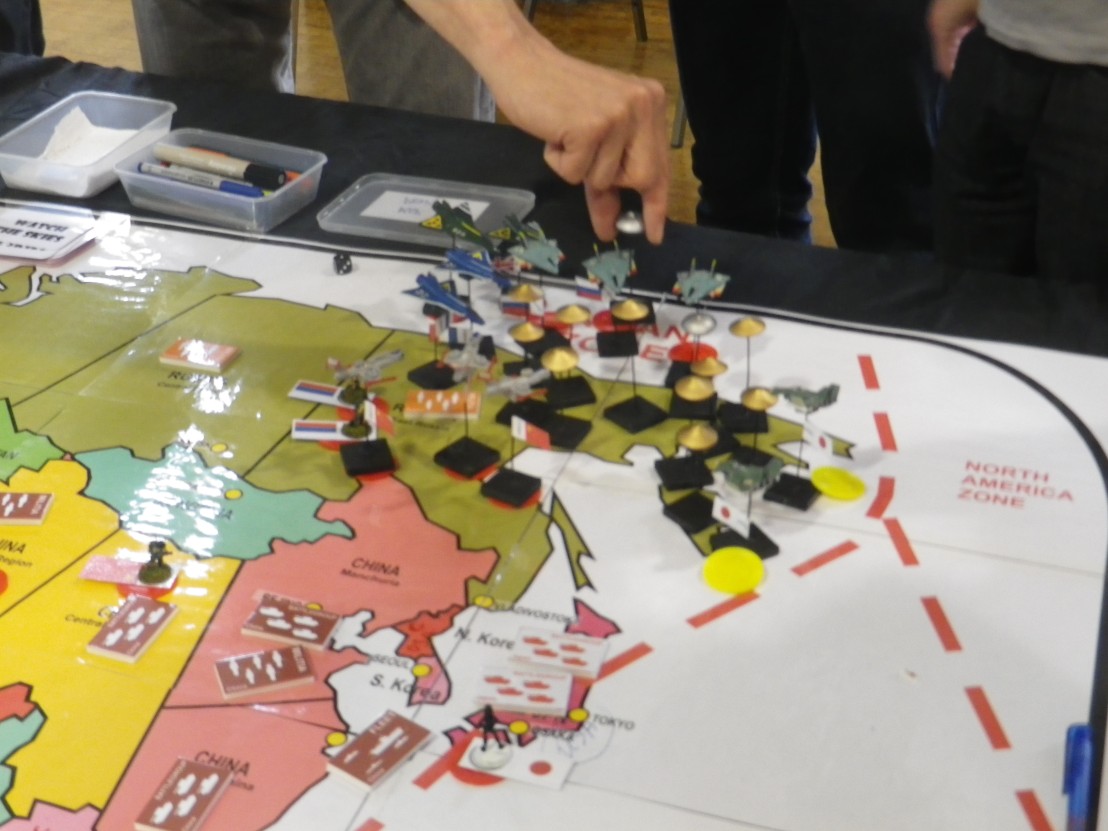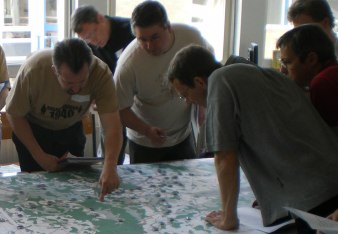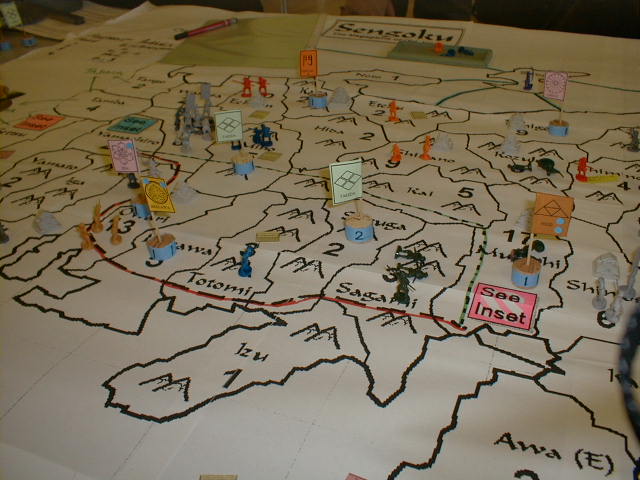Many megagame designers have used existing board game or computer games as an inspiration or framework or basis for a megagame idea. This can be an extremely good way of getting into designing your own games.

There are some advantages and also some pitfalls for the the unwary new megagame designers. It is important to remember that a megagame is superficially like many types of games but its characteristics mean that its design is not like designing a role-playing game, a board game, a LARP or a wargame.
At this stage lets look at the similarities and differences in game types.
Board games :
-
are designed to be played in a few hours and their mechanisms are optimised for that. Some very complex board games such as Europa Universalis and their ilk require very long playing times closer to 10 hours, but these are generally an exception.
-
They can have simple or complex rules and processes. In general board games that aim to simulate something (in the same way megagames contain a simulation) have reasonably complex rules and procedures which might take some time to learn and a while to work through.
-
The vast majority or board games operate on an ‘I Go, You Go’ (IGYG) principle. This is a major distinction with megagames which simply cannot operate in that way because of the constraints of time, space and numbers of participants means that action has to be simultaneous. It would be unacceptable for 40 players to be waiting around while one team of players have their ‘go’.

Mainstream wargame rules
-
Wargames often aspire to be a simulation of real historical military operations and as such are designed to contain complex simulations requiring rules for different circumstances, weapons, abilities and so on.
-
Complex rules and procedures mean that wargames can often take many hours to play just a few game turns.
-
Like the board game, many of the current generation of mainstream wargames operate on the IGYG principle, creating a lot of player inactivity. Older wargames, utilising order-writing and simultaneous movement and action are closer to the needs of megagames.
Role Playing Games
-
Often characterised by in-depth character development and statistics for each individual player. In megagames there might be elements of character development, but there are generally simpler because of the need to apply time pressure. In some cases character development is not relevant, for example where someone is role playing as real historical role (King of France, or some such).
-
They need careful adjudication by a skilled Game Master (GM) who manages the narrative and injects situational updates to challenge or assist the players. This has a lot in common with the way the Control Team operate in megagames – though in a megagame there is a need for the emerging narrative to work within an overarching theme and structure, and for it to maximise player interaction.
-
The RPG often has a wealth of tactical detail about individual player actions. This often requires a considerable expenditure of time and attention.
LARP
-
LARP place a heavy emphasis on role immersion and role playing on a personal level. In the most developed form it requires what is, in effect, improvisational acting skills. In fact it is these improvisation skills which form the core of the experience. Megagames contain elements of this, but more ofte
 n players are role playing a role rather than a character – they are themselves being a Prime Minister, not role playing an actual prime minister.
n players are role playing a role rather than a character – they are themselves being a Prime Minister, not role playing an actual prime minister. -
There is usually an absolute requirement for dressing up in role. Whilst in megagames there is some fun to be had with a bit of dressing up, it has never been a requirement, as megagames attract gamers from a wider field of interests, not all of whom are comfortable with dressing up and it is not necessary because megagames are not LARPS.
-
In some games there are physical interaction rules – rules for hitting one another with rubber swords etc. The physical and environmental aspects for a LARP are important even if there is no combat.
-
Many LARP games often have a highly structured narrative which has a clear denouement, which many be scripted or at least ‘nudged’ to create an exciting end-game. This is very distinct from a megagame which is fundamentally open-ended – the principle of following the emerging game-play makes it impossible (and undesirable) to have a constructed dramatic ending.
What becomes clear that merely ‘porting’ an existing game from an existing genre, adding more players and calling it a megagame does not easily work very well. And this has been my experience.

However, that does not mean that concepts and some of the mechanisms from other game genres might not be usefully used in the megagame context, obviously with some important adjustments. This is an especially attractive route, particularly where the designer is new to megagame design and maybe does not have to confidence or experience to develop all the systems and mechanisms needed for a game from scratch.
That said, even the most experienced designers will draw on their own personal ‘toolbox’ of systems, structures and procedures that they have developed in earlier games or borrowed from other designer’s games.
Many of our most successful games started with inspiration from another game. BUT when drawing on another game design remember to allow for the unique dynamics of the megagame.
Here are my golden rules for designing megagame rules and processes:
-
Game processes must be FAST. Minutes not hours. Every minute spent adjudicating rules is dead time so far as the player experience goes, and megagames are fundamentally about player experience. This is especially important when taken together with the standard requirement for there to be time pressure on the players within the megagame. A megagame design that involves people sitting around doing nothing for any length of time is highly undesirable.
-
There must be a meaningful purpose to player interactions. Including roles in a team, or even including whole teams just because it seems cool, but without a real game role or function is not just bad design, it is irresponsible. (for a contra-example see Part 2). Every role in your game must pass the ‘So What Test’. I will say more about this later.
-
No Kitchen Sinks. In designing a megagame it is easy to get carried away with great ideas for cool things you can get the players to do. Stop. Concentrate on the aspects of the game that they must have to do first and foremost. If you want to add gloss wait until you have a solid, working system. Too many moving parts will either slow the game down or they will be ignored or mishandled in the chaos and rush of actualy game play. This has the attendant risk of in-game unfortunate consequences that the game designer is not able to foresee, playtest for or control during the day.
In Part 2 : an Outrageous example of applying megagame structures to a very famous board game….
Please share more thoughts or give an example, even if a hypothetical one. For instance, how would you make a MegaGame out of Pandemic or Dead of Winter? Or would you never dare and for want reasons?
LikeLike
This is a four part blog – so maybe there will something toyour taste in parts 2, 3 or 4… hope so!
LikeLike